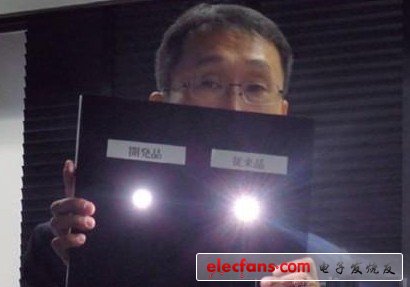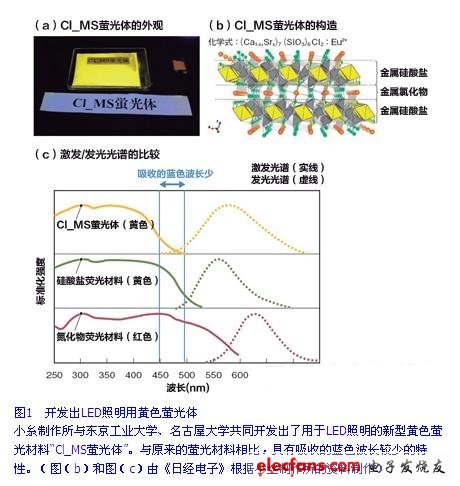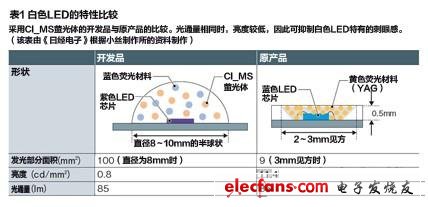Japan Koito Manufacturing Co., Ltd. has developed a new yellow fluorescent material "Cl_MS phosphor" for LED lighting. This material is developed by the company in collaboration with the research team of Hideo Hideno, a professor at Tokyo Institute of Technology, and the research team of Zebo, a professor at Nagoya University (Note 1). Although the specific mass production time was not announced, "the mass production technology of fluorescent materials has been established, and it is planned to negotiate with LED manufacturers and lamp manufacturers."

Open product (left) and original product (right) using Cl_MS phosphor
Note 1) The Tokyo University of Technology is responsible for proving the principle of luminescence, and Nagoya University is responsible for analyzing the crystal structure.
The Cl_MS phosphor is made of (Ca1-x, Srx) 7 (SiO3) 6Cl2 by adding an activator Eu2 + (europium) responsible for luminescence (Figure 1). The characteristic of this material is that it can convert purple light into yellow light with a quantum efficiency of 94%; it absorbs less blue light when excited; it can obtain a wide range of spectrum when emitting light, so the color expression is high. Compared with existing products, white LEDs using developed products "not only obtain soft light suitable for indoor lighting, but also reduce manufacturing costs."

Fig. 1 Developed yellow phosphor for LED lighting
Has five major advantages
Koito Manufacturing Co., Ltd. has developed Cl_MS phosphor, blue phosphor and purple LED chip, and developed a hemispherical white LED with a diameter of up to 10mm (Table 1). Compared with the existing white LED structure of 2 to 3 mm square and a thickness of about 0.5 mm, the volume has reached more than 50 times. "Thick Cl_MS phosphor and blue phosphor particles were coated at a low concentration of 1/10 to 1/20."

Table 1 Comparison of white LED characteristics
  Compared with existing white LEDs, hemispherical white LEDs using Cl_MS phosphors have five major advantages. The first advantage is high luminous flux and high brightness. According to Koito Manufacturing Co., because the phosphor particles are coated at a low concentration, shading and scattering between the particles can be suppressed, and the luminous flux is increased by 25%. The second advantage is that the brightness in the front direction is low, which can reduce the unique glare of white LEDs. The reason is that, compared with the white LED that originally used a combination of blue LED chip and yellow phosphor (YAG), the luminous area increased by more than 10 times and the brightness dropped to less than 1/10 under the same luminous flux.
The third advantage is that because only yellow and blue phosphors are used to obtain white light, there is no directivity. Although a semi-spherical structure with a diameter of 10 mm is used, even white light can be obtained (Figure 2) . According to Koito Manufacturing Co., Ltd., it is difficult to use a large-sized hemisphere like a developed product by combining a white LED with a blue LED chip and yellow phosphor and a white LED with a purple LED chip and red, blue, and green phosphors状 结构。 Shaped structure. The former is due to the strong direct light of the blue LED chip, and the surrounding part will be yellow, while the latter is absorbed by the red fluorescent material due to the blue and green light, and the surrounding part will be red.

Figure 2 The light-emitting part is larger, but the uneven light-emitting phenomenon is less
The fourth advantage is that, due to the use of a hemispherical structure with a diameter of 10 mm, the irradiation range is larger than before. When applied to LED lighting, it can illuminate the entire room brightly. The fifth advantage is the high degree of freedom in shape. Because there is no directivity, it can be made not only in a hemispherical shape but also in a conical shape.
Traffic Light Controller,Traffic Light Management,Adaptive Traffic Signal Control,Wireless Traffic Light Controller
Jiangsu Bosiwei Optoelectronics Group Co.,ltd , https://www.bswledled.com